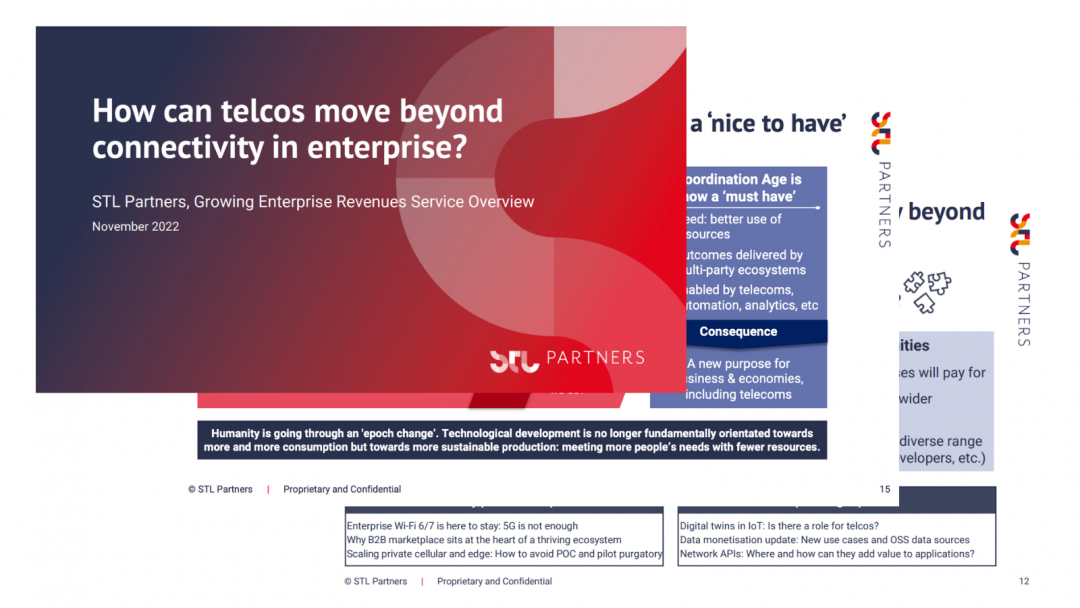
Digital twins and 5G in Industry 4.0
This article primarily draws on conversations with key players from Industry 4.0 and academia, held between April and July 2020. Respondents include representatives from a range of industry verticals, with a broad variety of job roles, to gain a snapshot of the existing attitudes and ambitions towards digital twins across both industry and academia.
Digital twins and Industry 4.0
Industry 4.0 hinges on an understanding that digital transformation will create value for enterprises across many verticals. Adoption of new technologies, such as AI, automation, IoT and edge computing, is already starting to help enterprises make more efficient use of their data to optimise processes and find new methods of creating value. Digital transformation requires significant investment and raises questions around when to invest, what to invest in (i.e. which will be the most promising use cases) and how to invest (i.e. which technologies will enable that promised value).
Digital twins is a way to answer such questions by enabling enterprises and developers to predict and understand how to use their existing infrastructure in the most efficient way and how to integrate other technologies to create additional value.
A lack of consensus on digital twins
Consensus as to the meaning of digital twins is elusive, though most agree it is not a static product. Some understand it as a broad philosophy, while others consider digital twins to be an evolution of solutions, where applications change as enterprises progress towards data centricity and transformation.
As a philosophy, digital twins is understood to be based on data-centricity relying on the extraction, management and analysis of data to provide users with insights and predictions on their assets. The following figure illustrates how data is extracted from the physical realm and modelled by the digital twin to enable human or machine interaction: the enterprise can make use of real data from the modelled asset.
Three realms of digital twins, as a philosophy

Source: STL Partners interview programme (April 2020)
As an evolution of solutions, digital twins can be considered to span applications on a four-stage continuum: visualisation, simulation/emulation, twin-to-twin process automation and cross-party communication. STL Partners defines the stages of the continuum as follows:
- Visualisation: the digital twin is used to create new dynamic visual representations, models and virtual dashboards of assets and processes (e.g. 3D schematics/Virtual Reality);
- Simulation/Emulation: the digital twin is used to perform realistic simulation or emulation modelling of assets; digital twins at this stage can enable the organisation to perform detailed ‘what-if’ scenarios to streamline their processes (e.g. R&D);
- Twin-to-Twin (T2T) process automation: digital twins are used to enable real-time analysis and T2T communication to automate certain processes through the creation of closed loops;
- Cross-party communication: digital twins communicate and interact (in real-time) with twins across multiple 3rd parties within the organisation’s ecosystem or supply chain.
Enterprise should view digital twins as an evolution
Research findings suggests it is most useful to consider digital twins as an evolution. STL Partners expects industries to adopt and progress along the digital twin continuum at different rates, depending on their different business needs and challenges, as well as their existing resources and environments.
Some industries, such as manufacturing, aerospace and defence, are leading adoption, while others such as smart cities, construction and logistics, will be one or two years behind. Slower adoption is expected in verticals such as oil and gas and infrastructure where more industry transformation is required.
Early adoption in manufacturing
Almost 50% of respondents in STL Partners’ research programme identified manufacturing as the leading vertical in digital twins adoption. There is a clear role for digital twins in:
- AR/VR and advanced visualisation: using augmented and virtual reality headsets to guide a worker via augmented display and/or a remote expert when carrying out maintenance and repair tasks
- Precision monitoring and control: conducting real-time, granular monitoring of a factory or plant (and robots/machinery) to reduce number of defects and optimise production process
- Advanced predictive maintenance: collecting data (i.e. through sensors) on the condition of machines to predict maintenance requirements and avoid unplanned downtime and associated costs – we explore this use case in more depth, below
Use of predictive maintenance solutions is already common in manufacturing, and in a plant or factory, it can reduce breakdowns by up to 70% and lower maintenance costs by 25% . However, as plants become more ‘connected’ with more sensors, available data will grow, enabling advanced predictive maintenance use cases for digital twins.
In this type of application, an emulation of equipment in the manufacturing plant is created and sophisticated extraction, management and analysis of sensor data is enabled to test different fault conditions. Data is the fundamental aspect of this application: the right data must be quickly moved to where it is required.
Smart cities adoption in near term
Smart city solutions are forecast to be worth over $250 billion by 2025 . Their intrinsic dependence on data, and being able to collect, process and apply it efficiently, makes it a strong candidate for digital twins use cases. These include:
- Connected devices e.g. autonomous drones, for example being explored by Atrius
- Connected vehicles e.g. V2V/X and smart traffic management
- Connected infrastructure e.g. smart building management
Smart city use cases are inherently wide ranging and involve connecting multiple assets, such as buildings, vehicles and devices, to enable more autonomous functions. One example is smart building management, for which there are two key phases: the construction process and the smart building itself.
In the construction phase of a smart building, traditional building information modelling (BIM) only provides a high-level view of a building, while digital twins enables the organisation to design and shape every aspect of the building in a dynamic way. For example, an emulation of the building can be used to demonstrate how aspects such as connectivity and lighting will function to determine the optimal set-up for purpose. This on-site use case would depend on having the right connectivity in place on the building site.
Post construction, digital twins can be used to manage other aspects of a connected building. For example, a network of sensors can collect a variety of different real data sets (e.g. on people flow, temperature, occupied rooms, lights etc.). This can be extracted, managed and stored via digital twins to enable decision makers to interact with the information more easily. Without digital twins, the noise from real datasets could make it prohibitively difficult to extract and interpret data to inform operational efficiency improvements.
As organisations progress along the digital twins continuum and explore more advanced use cases, digital twins could enable the creation of closed feedback loops, automating the management of buildings, to a certain extent (e.g. when a room is empty turn off the lights, when the temperature reaches x degrees turn down the heating). These relatively simple sequences will drive efficiency in the building and help to cut operational costs.
5G supports digital twins use cases
The use cases explored above will depend on connectivity. Take the example of smart cities: it is crucial that relevant data is extracted and moved from A to B at the right time in order to enable mission critical applications such as autonomous vehicles. It is therefore essential that organisations consider the quality of their network as part of a digital twins strategy.
5G’s capabilities (shown below) can enable a number of digital twins use cases that depend on the efficient and reliable movement of vast quantities of data. 5G could amplify the business case for digital twins.
5G’s capabilities support digital twins use cases

Source: STL Partners
Digital twins can support the case for 5G
Digital twins can enable industries to build the 5G business case by emulating 5G network capabilities:
- In manufacturing, this can help to address integration concerns and demonstrate 5G value. Developers and manufacturers can plan, test, configure and optimise their infrastructure and explore 5G use cases without the upfront risk of adoption.
- In smart cities, this can enable organisations and developers to understand the interaction between 5G and other technologies, for example edge computing, so they can explore how workloads can be moved using different network architectures and topologies (find out more about why 5G needs edge computing here). They can also test 5G-enabled security solutions to ensure against potential failure or breach before network rollout.
This will help to overcome reluctance to invest in new infrastructure and replace existing equipment. In this way, 5G and digital twins mutually benefit one another and may serve to accelerate adoption and innovation in Industry 4.0.
Telcos and digital twins
There are two ways that telcos could leverage digital twins: to accelerate the rollout of 5G and as a digital twins service to offer customers.
1. Accelerating 5G rollout
Many operators have been hindered by a lack of funding for 5G, resulting in slow and staggered deployments. This is partly due to the lack of defined business cases in many regions. Telcos could use digital twins, within their own network, to address this.
For example, there are doubts surrounding the ability of 5G to provide reliable indoor coverage. By creating an emulation of the network, it may be possible to test and address this scepticism. Furthermore, by leveraging digital twins to provide a virtual copy of the network and right time visibility on network performance and key metrics, operators can take a step towards deploying truly cloud native, dynamic and virtualized networks. This will be essential for deploying standalone (SA) 5G and delivering the promised capabilities laid out above.
Telcos could also use a network emulation to evidence what industry standards would be needed to enable specific use cases. The use of digital twins could inform decision making in this regard.
2. Providing digital twins services
Telcos could offer enterprises a digital twins private network as a managed service. Digital twins can provide increased visibility and control for enterprise customers as a private network, enabling them to view and interact with their network twin.
Beyond this, digital twins services could also allow telcos to access a wide range of industry verticals, and play in different parts of the value chain, for example in smart cities, where there are many and various use cases and multiple components depend on the same connectivity.
Recommendations
As a result of this research, STL Partners suggests the following:
- Keep abreast of and contribute to work on digital twins in your industry and in cross-industry bodies to learn more about how digital twins can support you in your position on the digital twins’ continuum;
- Consider digital twins to create a holistic view of your environment, including different connectivity solutions and associated characteristics for different use cases (connectivity is a key part of delivering transformative use cases which can drive efficiencies across Industry 4.0);
- Recognise how 5G and digital twins support each other in a virtuous circle – leverage digital twins to understand the business case for 5G and determine how 5G fits within your connectivity ecosystem and existing connectivity solutions;
- Engage with academia on (applied) research activities to progress digital twins’ adoption and usage across the industry (85% of research respondents agreed that academia would be a key partner for organisations and developers at different stages of their digital transformation).
The full research report can be found here.
Read more of our research on digital twins:
Download this article as a PDF
Read more about growing enterprise revenues
Growing Enterprise Revenues overview pack
Our overview pack explores how the telecoms industry can leverage new business models to meet enterprise customer needs
MNO IoT security roles across the IoT stack
As part of our study IoT security: The foundation for growth beyond connectivity, we looked at the IoT security services of 12 MNOs to see what they are doing to address enterprise IoT security needs beyond that of secure connectivity.
Vonage: What is Ericsson’s end game?
If Ericsson is able to successfully leverage Vonage’s developer ecosystem to drive the use of 4G and 5G APIs, then it could play an interesting role as a strategic partner and channel for operators as a means of accessing developer communities.





